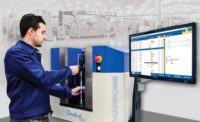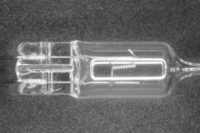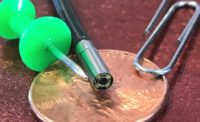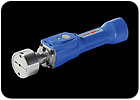
The key is Bluetooth®, a short-range communications technology expressly designed to replace cables on fixed and/or portable devices while maintaining a high level of security and reliability. If you don’t already have a Bluetooth enabled cell phone or computer, chances are you soon will because the technology is currently being used on more than half a billion devices worldwide.
One of the major advantages of Bluetooth is its ability to create ad hoc networks known as piconets automatically. Any Bluetooth device can communicate simultaneously with up to seven other devices within its range on a dynamically established piconet.
Translating that into the shopfloor environment means that Bluetooth enabled devices can automatically communicate with each other by creating their own piconets on-the-fly with no operator intervention required. Once they are connected, they can exchange data at speeds up to 3 Megabits Per Second (Mbps) for the latest systems.
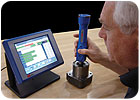
How It Works On The Shop Floor
Let’s look at a typical implementation using a simple manual plug/snap gauge, the Marposs M1 Wave™. The gauge uses a Bluetooth enabled handle that can be mated with different gauging heads to measure IDs, ODs, and thicknesses in a simple “click-and-collect” process. Bluetooth technology is intelligent enough to tell the gauge computer or electronic column which gauge head is active, transfer the data, and either display the result or observe a “live” reading.A number of data acquisition and analysis devices can be used in the system, ranging from the Marposs E4N Wave column or a small, stand-alone gauge computer, to much more capable systems with data acquisition/analysis software, advanced data storage and manipulation capabilities. For example, the Marposs Merlin™ is a compact, Bluetooth enabled gauging computer designed for shop floor applications.
A Merlin gauge computer can handle simultaneous inputs from up to 16 conventional devices, or be the master for a complete Bluetooth piconet depending on application requirements. The Merlin can store inspection data, or provide outputs in Excel CSV or Q-DAS™ formats to a memory stick or via LAN Ethernet to a cell or plant server.
The Merlin also has sufficient processing power to guide the operator through a step-by-step inspection sequence ensure consistent results and minimize operator errors. This is a very useful capability for inspecting complex parts with multiple features.
M1 Wave gauges also are compatible with Marposs’ powerful E9066 industrial gauging computer, which expands the capabilities of the system to include features like “Guided Sequence”. In these applications, the E9066 displays graphical instructions along with illustrations of the component to guide the operator through the inspection. Gauging results are displayed for the operator while the E9066 computer performs sophisticated data analysis in near real-time.
Linking a manual plug, snap or width gauge to a powerful computer with Bluetooth technology may seem like overkill, but the benefits are very real. Systems like this make it possible to migrate inspection processes upstream from the QC Lab to the machine tool, bringing manufacturing one step closer to the goal of producing a good part the first time and every time.
(Note: The Bluetooth® word mark and logos are owned by the Bluetooth SIG, Inc.)
